Disclaimer
Here at Kentucky Tennessee Living, we strive to keep this site nonpolitical in nature. All historic events posted that changed the lives of future generations as we remember those who fought on both sides of the Civil War. All events posted are for the benefit of remembering who we are as the American Appalachian people. We will begin our look at James Abram Garfield.
The Civil War
Between the years of April 12, 1861, and May 9, 1865, the War Between the States raged. The peace of the Appalachian Mountains was broken as brother took up arms against his brother. Several battles were won and lost the area of Letcher County and we will try to cover as many of them as possible.
Early Life
James Abram Garfield was born on November 19, 1831, in Moreland Hills, Ohio. He was the youngest of five children born to Abram and Eliza Ballou Garfield. Abram was a wrestler who died when James was only 18 months of age.
Because James father had passed away when he was at a young age, he received a rudimentary education at his village school. At the age of 16, James became a seaman for six weeks as a canal driver in Cleveland, Ohio.
School Life
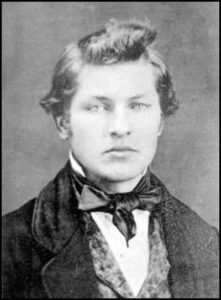
From 1848 to 1850 he attended the Geauga Seminary in Chester, Ohio, and learned many academic subjects while there. To pay for his school, he worked as a janitor, bell ringer, and carpenter. In 1849, he became a teacher. While there he met his wife Lucretia Rudolph whom he later married. They would have seven children together.
James then moved to Hiram, Ohio to attend the Western Reserve Eclectic Institute which later became Hiram College from 1851-1854. During his time in Hiram, Garfield became a preacher and had a regular preaching circuit in neighboring churches.
Later in 1854, Garfield then enrolled at the Williams College in Williamstown, Massachusetts. At Williams College he received his Bachelors of Arts degree in 1856.
Garfield then returned to the eclectic Institute where he taught classes in languages for the 1856-1857 academic year. Then he was made Principal of the school from 1857-1860.
Politics
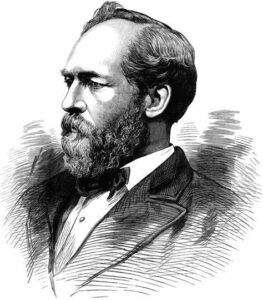
In 1859, James Abram Garfield was elected as a Republican member of the Ohio State Senate. He opposed Confederate secession from the United States and took up their anti-slavery cause. He served for the Ohio State Senate until 1861.
He also began to study law in 1859 and was admitted into the Ohio bar in 1861. Garfield then was elected to represent the Ohio’s 19th district for the Congress of 1861. He supported the gold standard for the transactions of money. While in Congress he gained a reputation as a skilled orator.
Civil War
April 12, 1861, the Civil War broke out in the United States. Garfield received a commission as a lieutenant colonel in the Union Army. Garfield would command the 42nd Ohio Volunteer Infantry.
In November of 1861, Garfield was then given command of the 18th Brigade that was under Brigadier General Don Carlos Buell. He would participate in skirmishes against the Confederate forces that were in Kentucky.
The Battle of Middle Creek
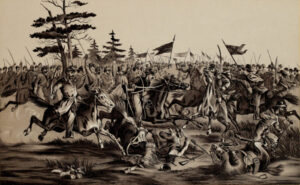
In January 6, 1862, General Humphrey Marshall and his troops were stationed in Paintsville, Kentucky. There he would be confronted in battle by General James Abram Garfield. At that time Garfield would be in command of the 42nd Ohio Brigade which also included the 40th Ohio Infantry, two Kentucky infantry regiments and two cavalry units.
The fighting did not go well for Marshall as Garfield’s Federal cavalry chased off the cavalry from Marshall’s troops to the forks of Middle Creek, two miles from Prestonsburg, Kentucky. On January 9th, the two armies met again and Marshall again withdrew his troops after a day of fighting.
General Humphrey Marshall had his troops vacate their trenches at Hager Hill and marched his four regiments up the Prestonsburg Road to the mouth of Abbot Creek which intersected with the Pound Gap road at that point. Marshall used this point to station his troops.
Pound Gap
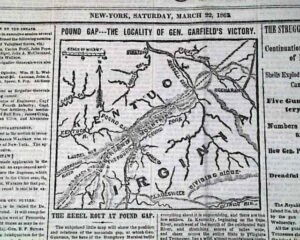
Because Garfield was pursuing him from Paintsville, Marshall had received intelligence that Cranor’s 40th Ohio was moving east from Licking Station to reinforce Garfield. He was in a perfect position to intercept either of these forces before they had the chance to combine against him
Approximately 800 Union Troops under Brigadier General James A. Garfield marched through deep snow used “squirrel trails” from Pikeville (then Piketon) to outflank and surprise the 500 or more Confederate State troops under Major John B. Thompson.
The fight lasted less than 20 minutes and the rebels fed leaving everything behind them. General Garfield then burned several buildings to prevent the Confederates from taking back their camp.
There was once a Southern Army Camp consisting of 71 log buildings to hold the area. President Garfield (then a General) had some of his troops to camp out for two weeks where the Jenkins Post Office now stands. General Garfield ordered that the 71 buildings be taken captive and the buildings being burned down, then left a small regiment to guard the area. This is one of the few mistakes he made during this war. General James Hunt Morgan (of the Morgan’s Raiders) later came through this area and met no resistance as they overtook the area once more.
Promotion and the Battle of Shiloh
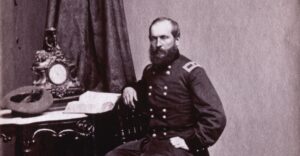
In recognition of the success of the battles and the take over of the area, James Abram Garfield was promoted to Brigadier General. After the retreat of Marshall, Garfield was the remaining force in Eastern Kentucky and announced that all who fought for the Confederacy would be granted amnesty if they returned to their homes. The last of the Confederates left the area and retreated into Virginia.
Garfield would now command the 20th Brigade of the Union Army of Ohio in early 1862. He was then ordered to join General Ulysses S. Grant’s forces as they advanced on Corinth, Mississippi. Before arriving the forces under General Albert Sidney Johnston surprised Grants men driving them back. Garfield and his men quickly joined up with Grant and the Battle of Shiloh began which was one of the bloodiest battles of the Civil War.
Tullahoma Campaign
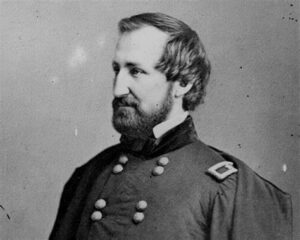
After the Battle of Shiloh, Garfield became sick with jaundice and had to return home. After he recovered he went to Washington to get a new assignment. There he got a new assignment as the Chief of Staff to Major General William S. Rosecrans. Together they formed the Tullahoma Campaign to trap Confederate General Braxton Bragg in Tullahoma.
After the skirmish, Bragg retreated toward Chattanooga. Rosecrans stalled his men for reinforcements and supplies before chasing down Bragg. Garfield advised against this and with a meeting of the council of war it was agreed that they would go on the attack.
Battle of Chickamauga

September 19th through the 20th of 1863, confusion over the orders that Rosecrans was giving caused gaps in the Union lines resulting in great losses. Rosecrans fell back to Chattanooga and reformed a defensive line. Garfield disagreed with this and with Rosecrans’ approval headed across Missionary Ridge to survey the damages. Garfield then sent a telegram to the Secretary of War Edwin M. Stanton for reinforcements. Twenty thousand troops arrived by train nine days later to give reinforcements to the Union line. Grant was then sent to replace Rosecrans and Garfield was sent back to Washington D.C. There Garfield was promoted to Major General.
38th Congress Seat
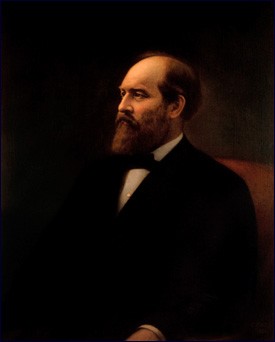
Early in 1862, James Abram Garfield was approached to run for the Republican 19th District Congress ticket. While he was still in the Army, Garfield did not actively campaign for this seat but others did so in his name. During the October 1862 general election, Garfield defeated D.B. Woods by a two-to-one margin for the seat.
After speaking to President Abraham Lincoln about the matter, Garfield kept his seat in the house and resigned his commission in the Army. Garfield became a member of the U.S. House of Representatives from the Ohio’s 19th District from March 4, 1863 through November 8, 1880.
During his stay in the House, Garfield sat on the House Appropriations Committee from March 4, 1871 through March 4, 1875.
President of the United States
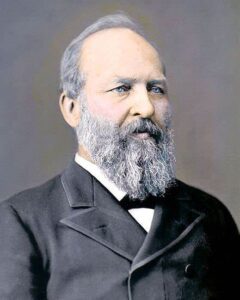
James Abram Garfield then ran for and won the President of the United States and was sworn into office on March 4, 1881. He became the 20th President.
On July 2, 1881, a disappointed office seeker by the name of Charles J. Guiteau met Garfield at the Baltimore and Potomac Railroad Station in Washington, and shot him. Though the wound was not fatal, it set up infections from his doctor’s care. President James Abram Garfield died on September 19, 1881 just six months after he was sworn into office.
Thank You
Thank you for reading our post about General and President James Abram Garfield. We thank you for continuing to support Kentucky Tennessee Living. As we bring to you the history of the Appalachian Mountains.
Sources:
James A. Garfield
https://en.wikipedia.org/wiki/James_A._Garfield
James Garfield
https://www.history.com/topics/us-presidents/james-a-garfield
Maj. Gen. James Garfield
https://www.military.com/history/maj-gen-james-garfield.html
James Garfield
https://www.biography.com/us-president/james-garfield
Pound Gap
https://explorekyhistory.ky.gov/items/show/237?tour=14&index=8
James Abram Garfield
https://www.findagrave.com/memorial/381/james-abram-garfield
Pound Gap Civil War Memorial
http://kytnliving.com/poundgapcivilwarmemorial
The Battle of Pound Gap
March 16, 1862
Facebook Post March 16, 2016 Kentucky Tennessee Living
Pound Gap ~~ there is more than meets the eye.
February 10, 2021
Facebook Post Kentucky Tennessee Living
Copyright and Other Information
All photos are in the public domain unless otherwise noted. This includes photos dated before 1923. All other photos are used with permission or under the education fair use statute of the US copyright law.
Copyright 2022 Kentucky Tennessee Living
Social Media Pages
For more about us, you can visit our Facebook page:
https://www.facebook.com/kytnliving
Our Twitter page:
https://www.twitter.com/KYTNLiving
Our YouTube Channel:
https://www.youtube.com/kytnliving
When we forget our past and who we are as a people, then we become who “they” say we are. ~~ David Sergent
I have attended the University of Kentucky. I have an Associates Degree from Hazard Community College and Technical School. I have also attended the University of Pikeville. I have taken several classes in Journalism as well as in the Appalachian History, Literature, and Sociology during my time at those schools.
I was born in Florida and grew up in Burdine, Kentucky. I have been married to David W. Sergent since May 4, 2013. I have two children and four grandchildren from a previous marriage. I currently live in Tennessee but my hope is to one day come back home to live in the beautiful mountains once more.



